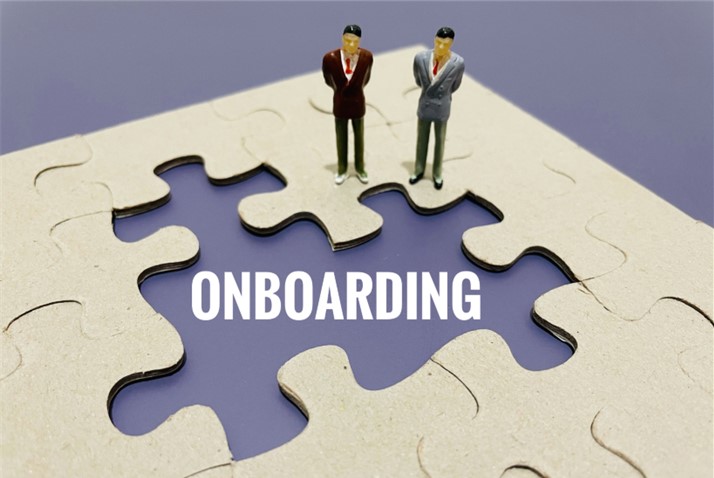Onboarding new employees is one of the most critical aspects of managing a successful business so an effective employee onboarding program is essential.
A well-designed employee onboarding program can not only help new hires get up to speed quickly, but also reduce turnover and increase productivity. But with so many factors to consider, it can be difficult to know where to start.
In this comprehensive guide, we will cover everything you need to know to create a winning employee onboarding program, including:
Define your goals and objectives
The first step in creating a successful onboarding program is to determine your goals and objectives. What do you want to achieve with your onboarding process? Do you want to increase productivity, reduce turnover, or simply ensure that new hires have a positive first impression of your company?
Get buy-in from leadership and HR
Once you have determined your goals and objectives, it is important to get buy-in from leadership and HR. This will help ensure that everyone is on the same page and working towards a common goal.
Conduct a needs assessment
Next, conduct a needs assessment to determine what resources and support your new hires will need to be successful. This may include things like training, equipment, and access to relevant information and resources.
Create a detailed onboarding plan
Based on your needs assessment, create a detailed onboarding plan that outlines the steps you will take to achieve your goals and objectives. This plan should include timelines, resources, and specific responsibilities for each department or team involved in the onboarding process.
Provide relevant training and support
It is important to provide new hires with the training and support they need to be successful. This may include things like orientation sessions, job shadowing, and ongoing training and development opportunities.
Continuously evaluate and refine your program
Once your onboarding program is up and running, it is important to continuously evaluate and refine it to ensure that it is achieving the desired results. This may involve gathering feedback from new hires and making changes based on their experiences and suggestions.
Celebrate successes and recognise milestones
Finally, don’t forget to celebrate successes and recognise milestones along the way. This can help build morale and encourage new hires to continue working towards their goals and objectives.
Summary
Creating a successful employee onboarding program requires careful planning, attention to detail, and a commitment to continuous improvement. By following the steps outlined in this guide, you can set your new hires up for success and help ensure the long-term success of your business.
The Benefits of Working with a Specialist Recruitment Company for Employee Onboarding
When it comes to developing an employee onboarding program, working with a specialist recruitment company can bring a range of benefits to your organisation. From improving the speed and quality of onboarding, to reducing turnover and boosting productivity, there are many reasons why it pays to work with a recruitment specialist.
Access to expertise and experience
One of the biggest benefits of working with a specialist recruitment company is access to their expertise and experience. Recruitment specialists have deep knowledge of the latest onboarding best practices and can help you design and implement a program that meets your specific needs and goals.
Improved speed and quality of onboarding
With the help of a specialist recruitment company, your employee onboarding process can be completed more quickly and efficiently. A specialist will be able to provide you with tailored onboarding resources and support, helping to streamline the process and ensure that your new hires get up to speed as quickly as possible.
Reduced turnover
One of the biggest benefits of a well-designed employee onboarding program is reduced turnover. When new hires feel supported and valued, they are more likely to stay with your organisation for the long term. By working with a specialist recruitment company, you can help ensure that your onboarding program is designed to meet the needs and expectations of your new hires, reducing the risk of turnover, and saving your company time and money.
Boosted productivity
By providing new hires with the support and resources they need to be successful, a well-designed employee onboarding program can also boost productivity. When new hires feel confident and supported, they are more likely to be productive, creative, and engaged in their work.
Cost savings
Finally, working with a specialist recruitment company can help you save money on your employee onboarding program. By leveraging the expertise and experience of a specialist, you can avoid the costs and risks associated with trial-and-error onboarding methods and ensure that your program is designed to meet your specific needs and goals.
Summary
Working with a specialist recruitment company to develop an employee onboarding program can bring a range of benefits to your organisation. From improving the speed and quality of onboarding, to reducing turnover and boosting productivity, there are many reasons why it pays to work with a recruitment specialist.
Why Choose PEEQ HR Recruitment Agency?
The average fill rate amongst HR Recruitment Agencies is 46%, but at PEEQ our average fill rate sits above 90%, So you are twice as likely to make a hire if you choose PEEQ
This is due to two reasons:
Firstly, we only partner with our clients on an exclusive basis, so we ‘own the responsibility’
Secondly, we don’t employ recruiters. Instead, we work with trusted and proven freelance HR recruiters, to hire for our clients.
We give them the tools and infrastructure to be successful, and the rest is down to their magic and experience. Our Associates are not employed by us and only get paid for making a successful hire.
This makes them incredibly tenacious and committed to finding the best talent, which is why our fill rate sits above 90%, compared to the industry average of 46%.
More reasons to work with PEEQ
Psychometric insight reports
Obtain a unique insight into your candidates’ Cultural Fit, Strengths, Decision Making and Resilience through our accredited assessments.
Post-hire executive coaching
Set your hire up for success with a tailored coaching programme that helps them achieve their full potential personally and professionally.
Up to 6 month guarantee
Confidently select your preferred candidate with our ‘surety of hire’ 6 month rebate period. The ultimate comfort for a big decision.
BeTalent Accredited Approach
We are proud to offer the BeTalent Accredited approach that enables us to deliver scientific candidate assessment, in accordance with the British Psychological Society standards.
This solution is for you if you want:
- An objective way to determine who is the best fit for your role
- A comprehensive understanding into your new hire before they start
- Peace of mind that you’ve made the right hiring decision
Book a FREE coaching consultation to discuss your options
Still undecided about whether you should use an HR recruitment agency or do it yourself? Book a free HR coaching consultation with a member of the team to help weigh up your options.
Share This Article






